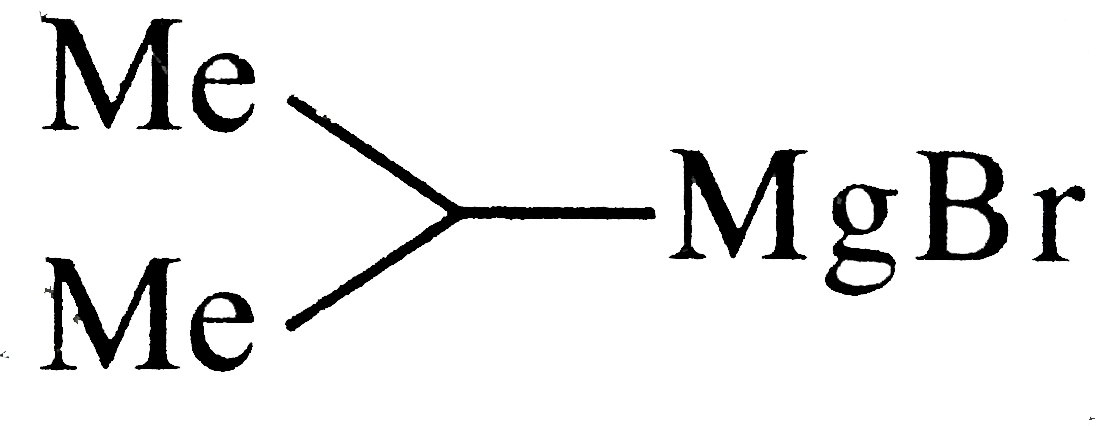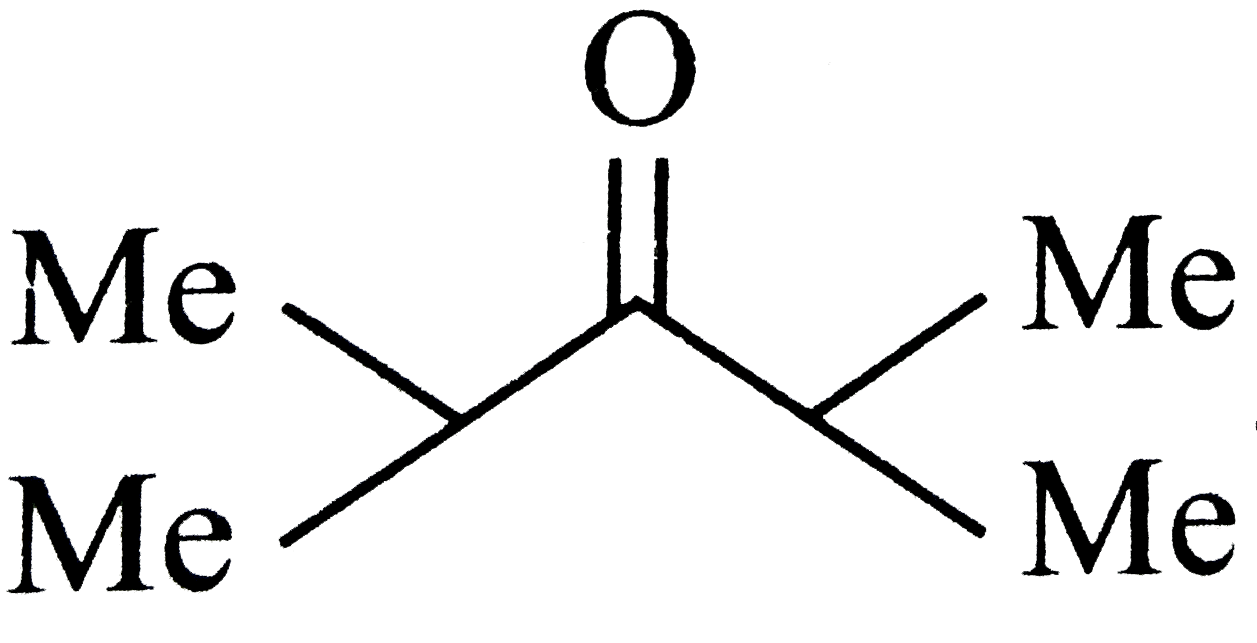Select the correct alternative from the choices given:
When acetone is treated with Grignard's reagent, followed by hydrolysis, the product formed is :
Secondary alcohol
Tertiary alcohol
Primary alcohol
Aldehyde
The correct Answer is:2
To solve the question, we need to understand the reaction between acetone and Grignard's reagent, followed by hydrolysis. Let's break down the steps:
Step 1: Identify the Structure of Acetone
Acetone is a simple ketone with the formula CH3C(=O)CH3. This means it has a carbonyl group (C=O) flanked by two methyl groups.
Step 2: Understand Grignard's Reagent
Grignard's reagent is represented as R-MgX, where R is an alkyl or aryl group and X is a halogen. For this example, we can use CH3MgBr as our Grignard reagent.
Step 3: Reaction Mechanism
When acetone reacts with the Grignard reagent, the nucleophilic carbon of the Grignard reagent attacks the electrophilic carbon of the carbonyl group in acetone. This leads to the formation of a tetrahedral intermediate.
The reaction can be summarized as follows:
CH3C(=O)CH3+CH3MgBr→CH3C(OMgBr)(CH3)2
Step 4: Hydrolysis of the Intermediate
The next step is hydrolysis. When the intermediate is treated with water (or an acid), the MgBr group is replaced by a hydroxyl group (-OH), resulting in the formation of a tertiary alcohol.
The hydrolysis reaction can be represented as:
CH3C(OMgBr)(CH3)2+H2O→CH3C(OH)(CH3)2+MgBrOH
Step 5: Identify the Product
The product formed after hydrolysis is CH3C(OH)(CH3)2, which is a tertiary alcohol.
Conclusion
Thus, when acetone is treated with Grignard's reagent followed by hydrolysis, the product formed is a tertiary alcohol.
Final Answer
The correct alternative is tertiary alcohol (Option 2).
---
Acetone is a simple ketone with the formula CH3C(=O)CH3. This means it has a carbonyl group (C=O) flanked by two methyl groups.
Grignard's reagent is represented as R-MgX, where R is an alkyl or aryl group and X is a halogen. For this example, we can use CH3MgBr as our Grignard reagent.
When acetone reacts with the Grignard reagent, the nucleophilic carbon of the Grignard reagent attacks the electrophilic carbon of the carbonyl group in acetone. This leads to the formation of a tetrahedral intermediate.
CH3C(=O)CH3+CH3MgBr→CH3C(OMgBr)(CH3)2
The next step is hydrolysis. When the intermediate is treated with water (or an acid), the MgBr group is replaced by a hydroxyl group (-OH), resulting in the formation of a tertiary alcohol.
CH3C(OMgBr)(CH3)2+H2O→CH3C(OH)(CH3)2+MgBrOH
The product formed after hydrolysis is CH3C(OH)(CH3)2, which is a tertiary alcohol.
Thus, when acetone is treated with Grignard's reagent followed by hydrolysis, the product formed is a tertiary alcohol.
The correct alternative is tertiary alcohol (Option 2).
Topper's Solved these Questions
- CHEMISTRY-2020 BOOK - ICSECHAPTER - CHEMISTRY-2020 EXERCISE - Question (Answer the following question)
4 Videos
- CHEMISTRY-2019BOOK - ICSECHAPTER - CHEMISTRY-2019EXERCISE - Question (Answer the following questions)
5 Videos
- COORDINATION COMPOUNDS BOOK - ICSECHAPTER - COORDINATION COMPOUNDS EXERCISE - ISC EXAMINATION QUESTION (PART- II DESCRIPTIVE QUESTIONS)
39 Videos
Similar Questions
Knowledge Check
When acetaldehyde is treated with Grignard reagent, followed by hydrolysis the product formed is :
Aprimary alcoholBsecondary alcoholCcarboxylic acidDtertiary alcoholWhen acetaldehyde is treated with Grignard reagent, followed by hydrolysis the product formed is :
Aprimary alcoholBsecondary alcoholCcarboxylic acidDtertiary alcoholWhen acetaldehyde is treated with Grignard reagent, followed by hydrolysis the product formed is :
Aprimary alcoholBsecondary alcoholCcarboxylic acidDtertiary alcohol
When
 is treated with C2H5MgBr, followed by hydrolysis, the product is :
is treated with C2H5MgBr, followed by hydrolysis, the product is :
View SolutionWhen acetaldehyde is treated with Grignard reagent, followed by hydrolysis the product formed is :
View SolutionThe reaction of formaldehyde with Grignard's reagent followed by hydrolysis yields
View SolutionThe reaction of formaldehyde with Grignard's reagent followed by hydrolysis yields
View SolutionThe reaction of formaldehyde with Grignard's reagent followed by hydrolysis yields
View Solution

 is treated with
is treated with  followed by hydrolysis, the product is :
followed by hydrolysis, the product is :